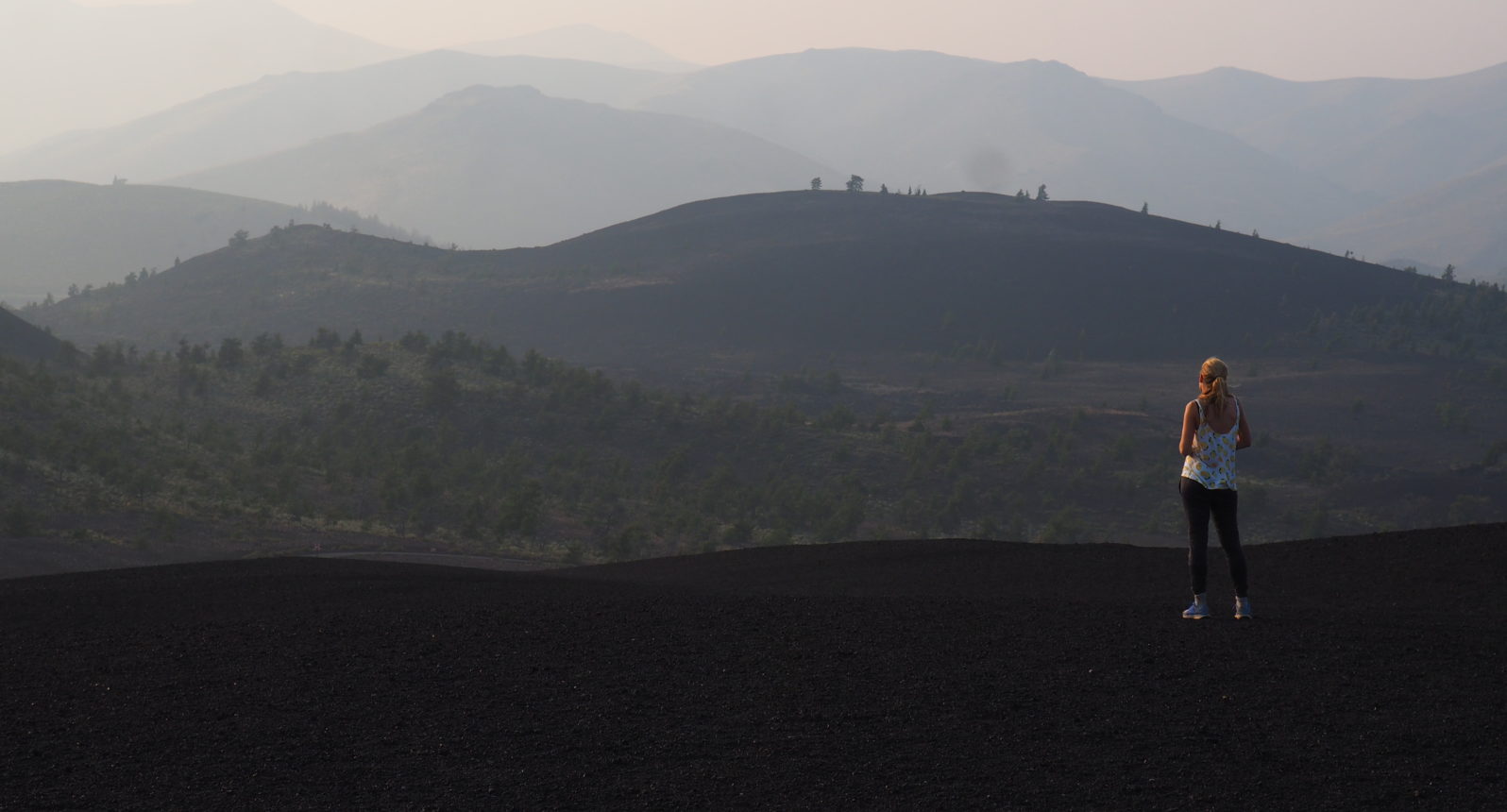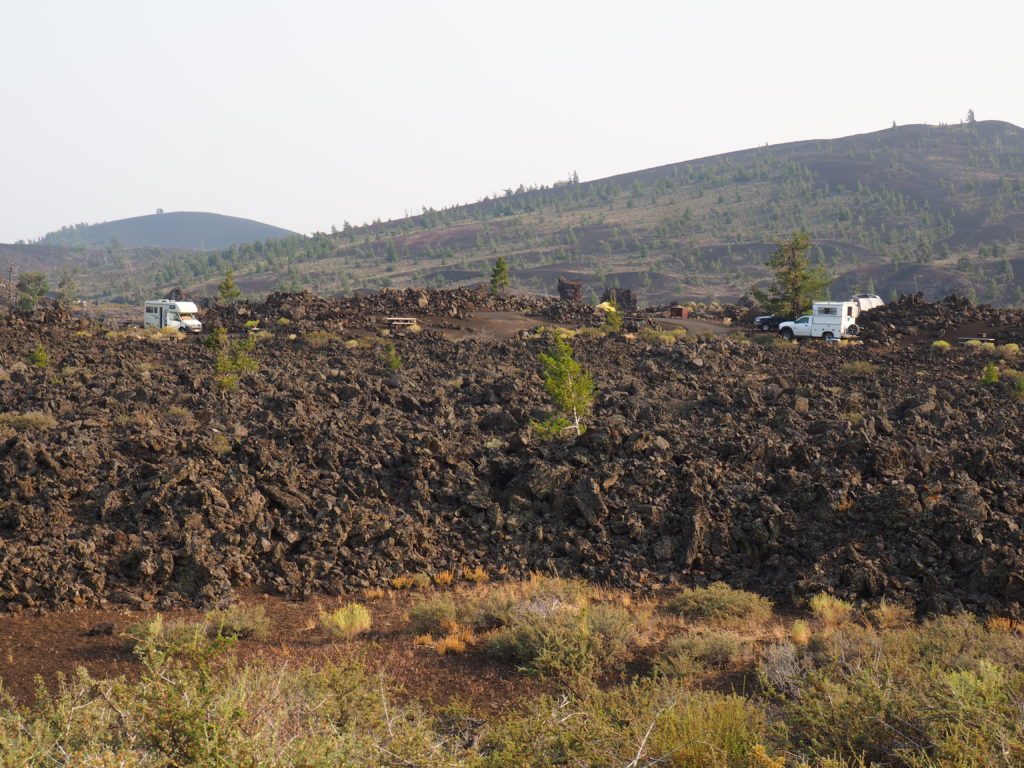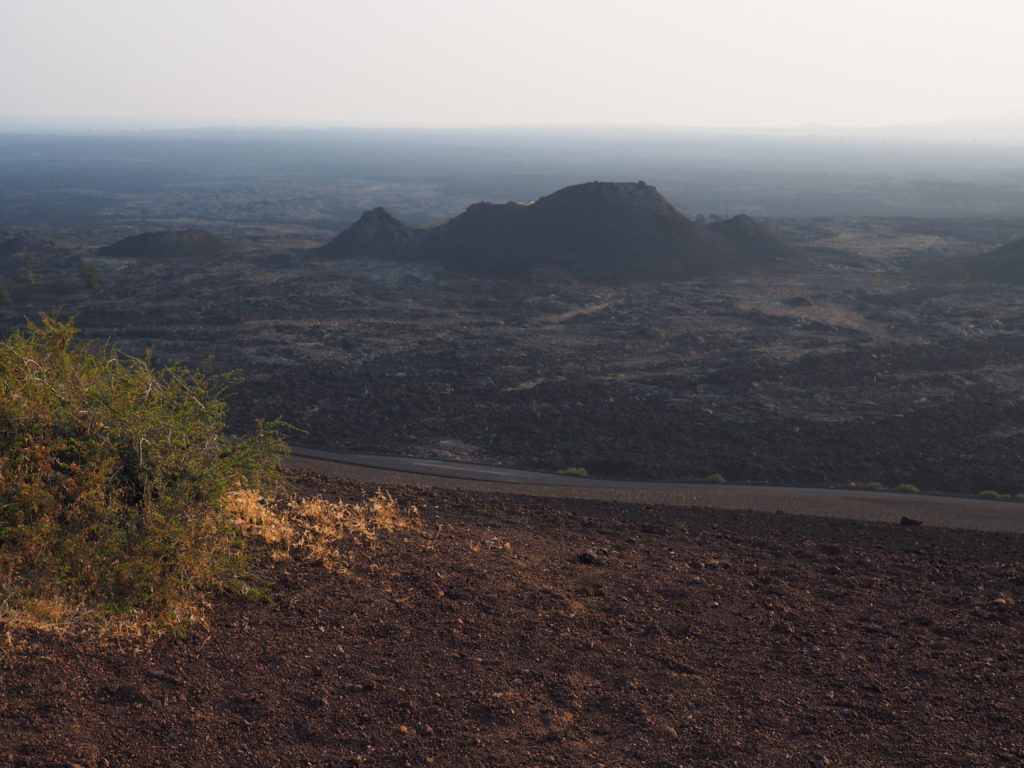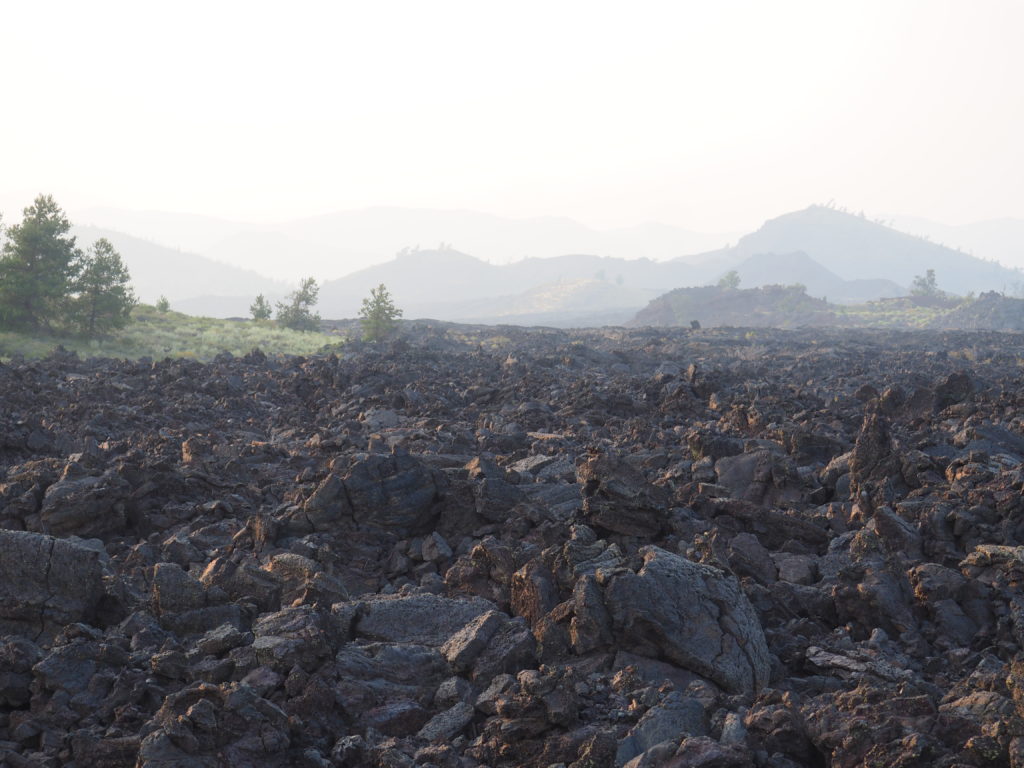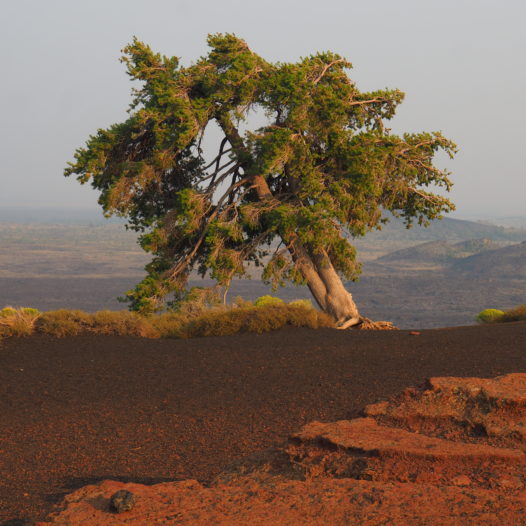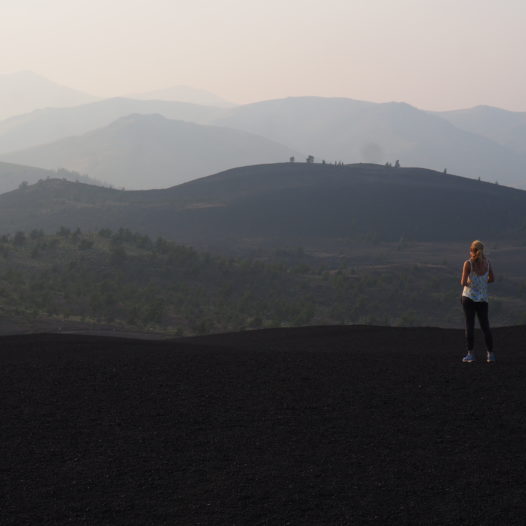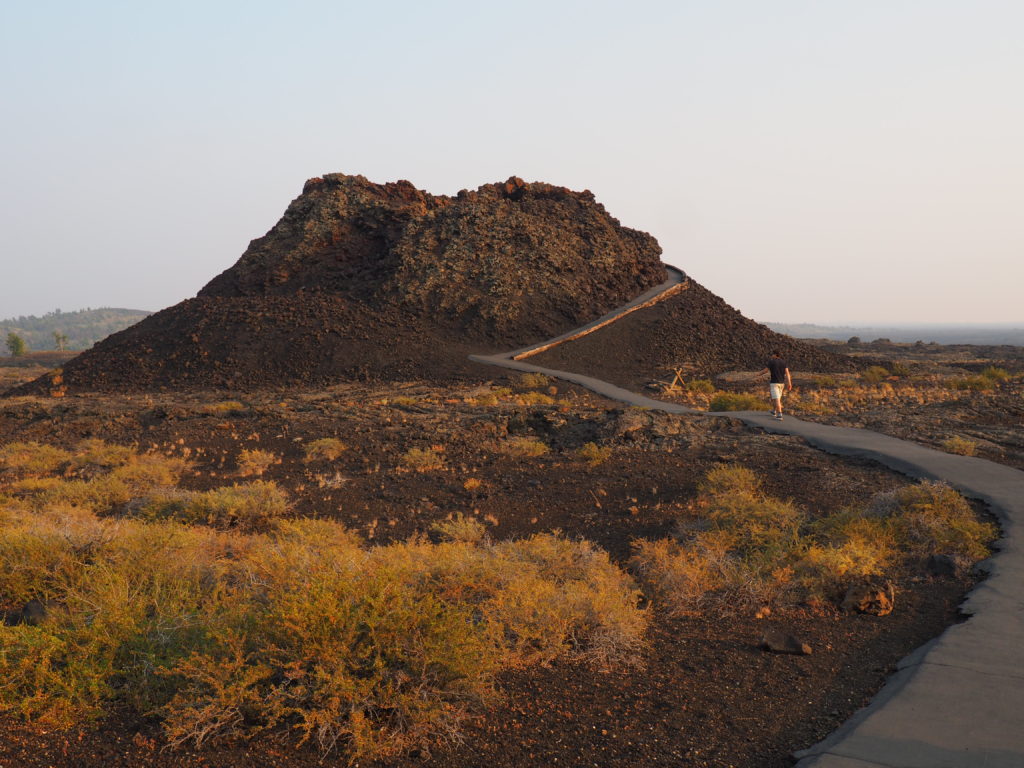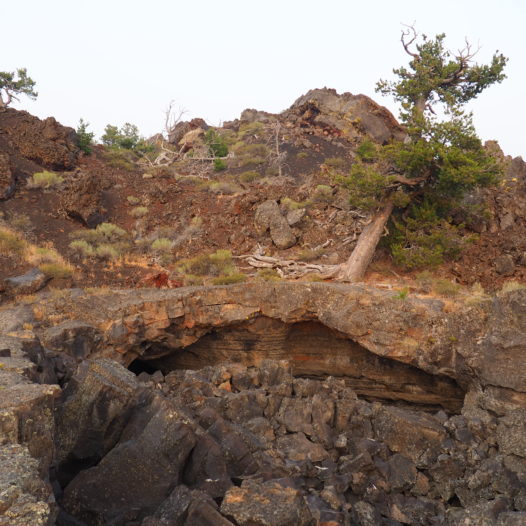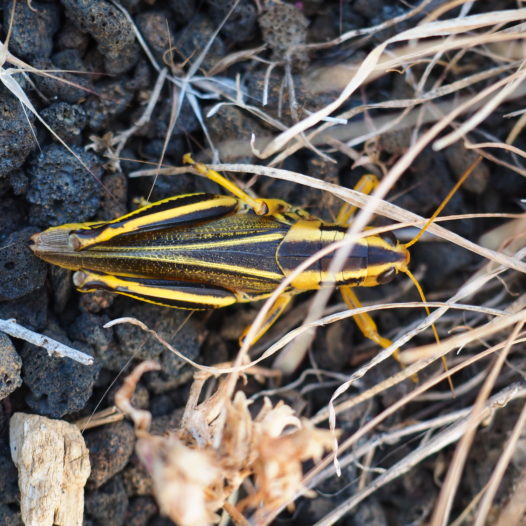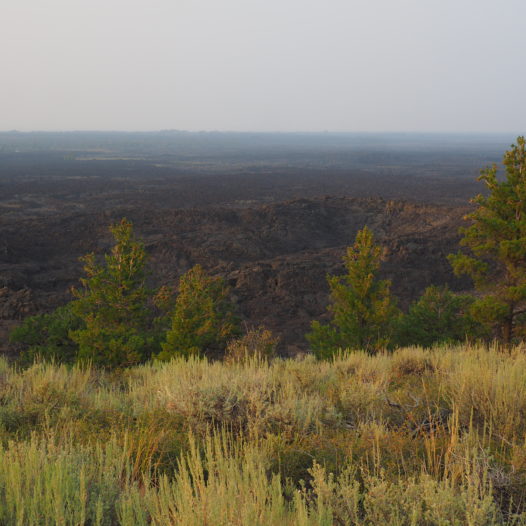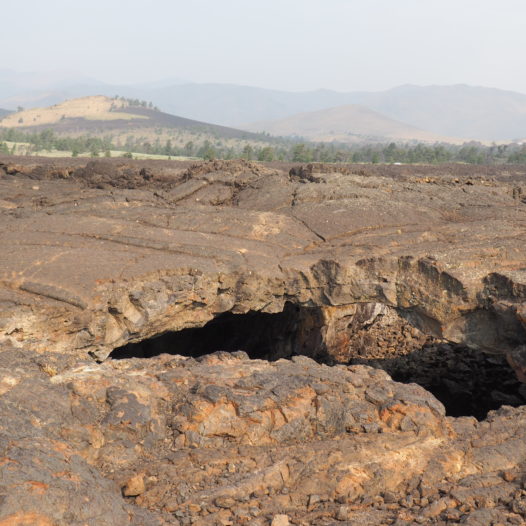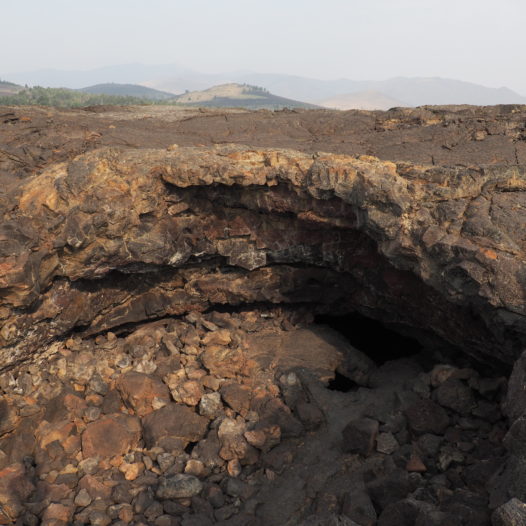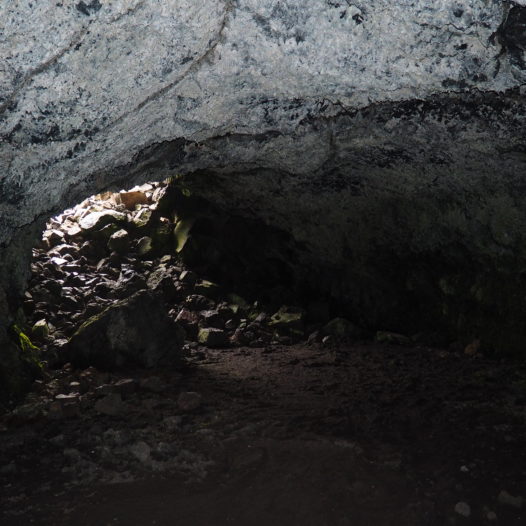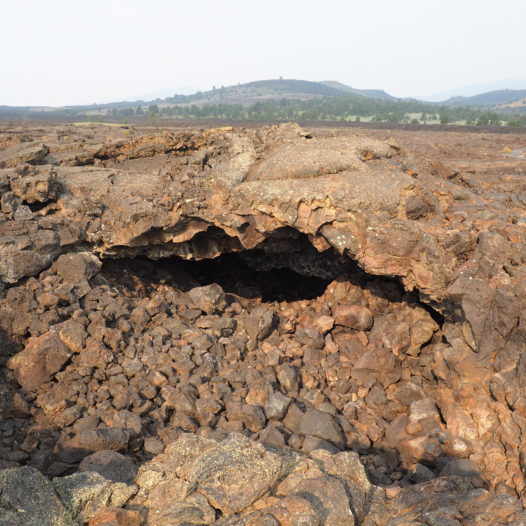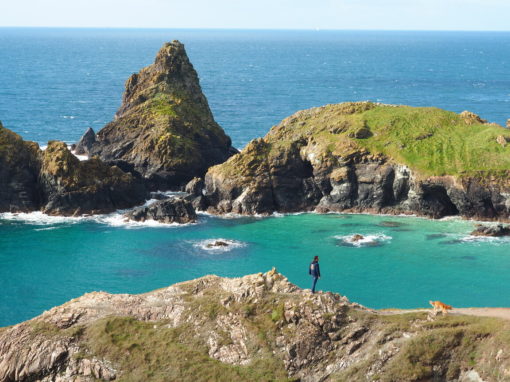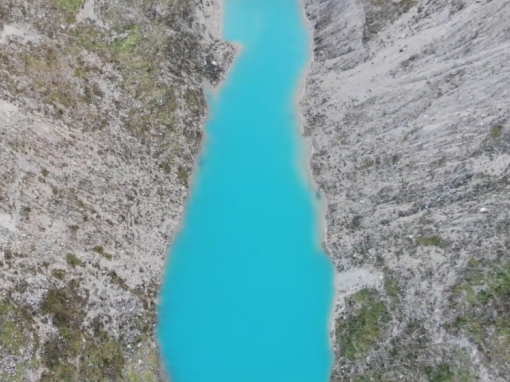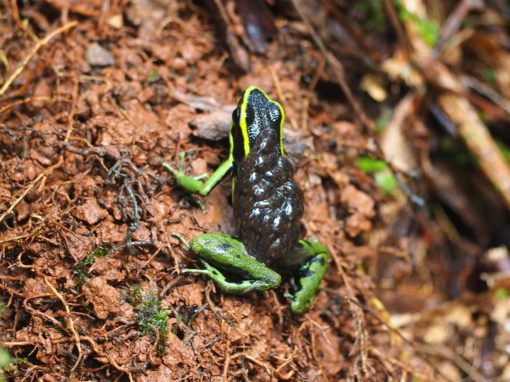As we were driving from Wyoming towards Idaho it felt like we entered a no-man’s zone. Leaving the adventurous rocky mountain range of Grand Teton right behind us, we had to get used again to the endless plains of nothingness with only the sagebrush to keep us company.
With the exception of Idaho Falls, you can drive for hours without seeing any interesting landmarks in Idaho. Therefore, you might be stunned when you suddenly come across acres and acres of blackened lava eruptions. We were for sure. Next thing you know you see the sign for the national monument that is Craters of the Moon. Moonlike landscapes is something quite peculiar to find, especially if you’re in Idaho!
Craters of the Moon is a huge national park and preserves roughly the size of Rhode Island in terms of desolate volcanic formations and lava flows acres. As we drove all the way around it in order to get to the entrance of the national monument, we realized it was indeed much bigger than we thought it to be.
One of four national parks in Idaho, President Calvin Coolidge established Craters of the Moon in 1924, but as a visitor only a small part of it is accessible. No worries though, that small bite will probably already provide you with more outer worldly views than you can chew.
The many sharply sculpted volcanic rock fields and formations are fascinating for sure. I tried hard, but I’m afraid that my pictures won’t do justice to the area. You really have to experience the area yourself. Though while looking at the photos you might understand that the surface of Craters of the Moon indeed resembles, well… the moon. Well, as far as we poor earthlings might think. But the fact that astronauts have used this locations to train for space may assure that idea.
There being so few people in the park might add up to the outer space experience. Give yourself at least half a day to get a good view of the area. This will also allow you plenty of time to hit some trails. We did all of the shorter ones and apart from the steep Inferno Cone (unfortunately also the most interesting trail), all of them were fairly easy to hike.
Here’s what to do:
Visit the Robert Limbert Visitor Center
Craters of the Moon is a gigantic area, but the part that you can visit by car is rather small and only has one entrance road. And it leads along the Robert Limbert Visitor Center. It’s useful to take a break in here, if only because you can fill up your drinking bottles in front of the center. Apart from that, you can stroll through a small exhibit at the center and watch a film about the area. It will set the tone for your experience.
In case you want to explore the caves of the Caves Trail you need to get a stamp at the visitor center too. The stamp is valid for as long as you can see it on your hand and one of them is enough for the entire family.
Lava Flow Campground – a stay at Mars
Craters of the Moon is super far away from, well… everything. If you want to bring a visit to this isolated corner of the States you might consider to stay a night in the area.
Funny enough, the Lava Flow Campground is situated right in the middle of the monument. I mean, the tent and RV spots are created just in the middle of all of these lava flows. I think this campground was one of the more peculiar ones we’ve ever stayed at because of that. Just look at the picture below ↓ . It seems like an outer space location right?
Lava Flow Campground is a first come first serve location and costs $15,- USD for a night. Now, in many national parks and monuments that really means that you have to get in there early. Fortunately we didn’t experience that ourselves. We arrived rather late – at 4pm – in the middle of August and were still able to find quite some empty spots.
It’s really fun picking out your site in the lava flow in here. Some of them have superb vistas on the cones behind the campground, others are settled in a lava canyon – but no worries as all of them will cover your tent in a bit of black earth. Be aware of the chipmunks though, as always these are pretty cheeky in here!
Don’t forget to look up to the sky at night. Since there are so few people in the area, there’s also so little light pollution – great for stargazing.
Drive the loop
The National Parks Service did an great job of making these harsh lands accessible by car. If you drive through you can’t help but wonder how they did it.
The road is an easy 30-minute loop, but you can prolong it with a visit to the trails, which are all along the road ↓
Hike the trails
There are nine hiking trails in this park and apart from two they’re all under 2 miles / 3.2 km. Which is convenient, as you can see a lot of different lava flows within a short amount of time. From the remnants of a swirling lava flow to the tiny extinct volcanoes of the spatter cones to the underground lava tubes – the variety is real!
If you’re limited in time, definitely don’t miss out on Devil’s Orchard, Inferno Cone and Spatter Cones. All of those these trails are accomplished within 30 minutes.
- North Crater Lava Flow (0.3 miles / 0.5 km one-way)
This loop trail follows a pahoehoe flow – a lava flow that resembles a ‘ropey-looking’ structure – that spilled from the North Crater vent some 2000 years ago. It’s a nice trail if you want to get introduced to the variety of lava flows. ↓
- North Crater Trail (3.5 miles / 5.6 km one-way)
The trail starts at the previous one and continues to the rim of Big Craters before descending to the Spatter Cones. Personally I’d skip it, if only because you can already see quite some of the area from the North Crater Lava Flow Trail and the Spatter Cones Trail.
- Devil’s Orchard (0.5 miles / 0.8 km roundtrip)
This trail is a nice one if you want to learn a bit about the vegetation in the area. Sporadic plants are springing up here and there and exhibits along the trail tell you about the difficulties of protecting this environment. The ranger told us it was het favourite. Personally I though it was nice too, but don’t expect something spectacular.
- Inferno Cone (0.4 miles / 0.8 km roundtrip)
The one trail you have to do is also the hardest short hike in the area. Although it’s a straight trail – a little less than a half mile with a 164 foot gain in elevation – it for sure is steeper than it looks, if only because you might sink away a bit in the loose sand. Completely worth a bit of back sweat though! ↓
- Spatter Cones (0.1 miles / 0.16 km )
Can you call this even a trail? It’s more like a pullout. Nonetheless a worthy one, as you can get up close to these mini-volcanoes. Like a geyser, the spatter cones were created after an outbreak of lava eruptions that would fall back to the earth at the exact same spot. Cooling down in between, bit by bit they formed the walls around these eruptions. ↓
- Broken Top Loop Trail (1.8 miles / 3 km roundtrip)
Pick up a trail guide at the beginning of the trainhead and follow the numbered signs along the way to learn more about the different kinds of lava that you can see in here. Make sure you won’t miss the signs as it can be difficult to follow the path in the end. When we were there we encountered an enormous amount of these black and yellow grasshoppers. ↓
- Wilderness Trail (8 miles / 12.8 km one-way )
This trail picks up up from the Broken Loop Trail. It’s the longest one in the park and I wonder how many people actually walk it. I heard stories about the first guy who tried to cross the entire area of Craters of the Moon from north to south – when this trail wasn’t there yet – together with his dog. Apparently they both suffered immensely, as the dog was no longer able to walk on the rocky lava surface after a day or two and its owner had to carry him all the way out of the lava desert.
If you’re in search of ultimate solitude, this is your trail!
- Three Molds (2 miles / 3.2 km roundtrip )
Another trail that starts from the same parking lot as the previous two trails. Named after trees that remained standing as the lava encased them, leaving vertical molds in the cooling lava.
- The Caves Trail (1.6 miles / 2.6 km roundtrip)
There are several caves to explore in the area, but this one is the most accessible for sure. After less than a mile you’ll encounter a stairway that leads into a lava tube cave. The rocks are sharp and jagged and at some area the water is dripping in too. So wear good shoes for this one. Also, you need to obtain a stamp at the visitor center before descending into the caves! ↓
Here’s where to find the campground, visitor center and all of the trails!
